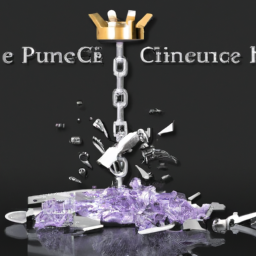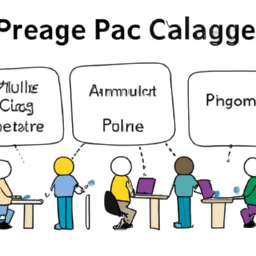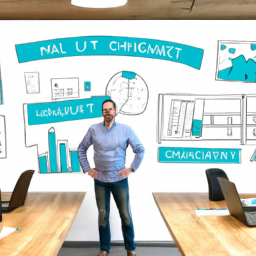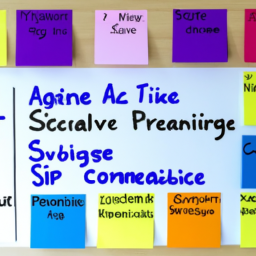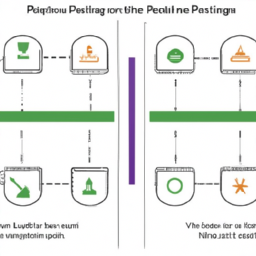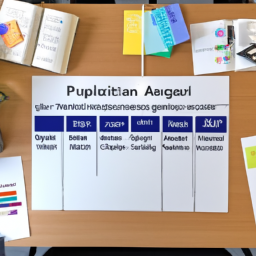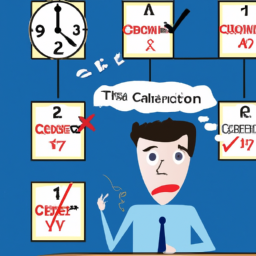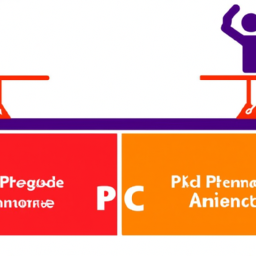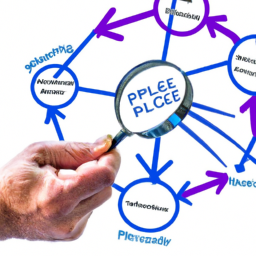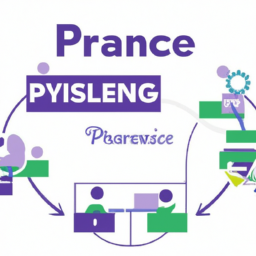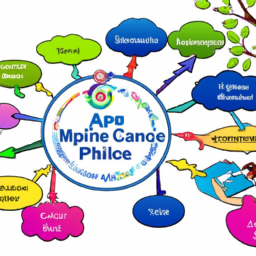Are you ready to conquer the PRINCE2 Agile exam and achieve success? Well, buckle up because we’ve got the ultimate guide for you!
In this article, we will walk you through the 11 essential topics that you must master to excel in the exam.
From understanding the principles of Agile Project Management to tailoring PRINCE2 Agile for different projects, we’ve got you covered.
Get ready to dive deep into the world of PRINCE2 Agile and emerge as a certified expert.
Let’s get started!
Key Takeaways
- Agile project management principles emphasize collaboration, flexibility, and continuous improvement.
- PRINCE2 Agile combines the flexibility of Agile with the structured approach of PRINCE2.
- Integration allows for a flexible and adaptable project management approach.
- Benefits of integration include combining a structured framework with an iterative and collaborative nature.
Agile Project Management Principles
To succeed in the essential Prince2 Agile exam, you must understand the principles of Agile Project Management.
Agile project management principles are a set of guidelines that help teams effectively manage projects in a dynamic and ever-changing environment. These principles emphasize collaboration, flexibility, and continuous improvement.
One of the key principles is effective stakeholder communication. This involves actively engaging stakeholders throughout the project to gather their input, address their concerns, and keep them informed of progress.
By maintaining open lines of communication, project teams can ensure that stakeholder expectations are managed effectively and that any changes or issues are addressed promptly.
Effective stakeholder communication is essential for maintaining project alignment and ensuring successful project delivery.
PRINCE2 Agile Methodology Overview
Learn about the overview of the PRINCE2 Agile methodology and how it can benefit your project management approach.
PRINCE2 Agile combines the flexibility and adaptability of Agile with the structured approach of PRINCE2. It is a framework that provides guidance for managing projects in an Agile environment. By incorporating Agile practices into the PRINCE2 framework, teams can deliver projects more efficiently, with better quality and customer satisfaction.
The benefits of using PRINCE2 Agile are numerous. It allows for better collaboration between teams, promotes early and frequent delivery of products, and provides a flexible approach to managing change. It also enables organizations to respond quickly to market demands and adapt to evolving requirements.
However, implementing PRINCE2 Agile can come with its challenges. It requires a cultural shift within the organization to embrace Agile practices and principles. There may also be a learning curve for teams and stakeholders who are not familiar with Agile methodologies. Effective communication and collaboration are essential to address these challenges and ensure the successful adoption of PRINCE2 Agile.
Integrating PRINCE2 and Agile Approaches
When it comes to integrating PRINCE2 and Agile approaches, there are several benefits to consider.
Firstly, the integration allows for a more flexible and adaptable project management approach, combining the structured framework of PRINCE2 with the iterative and collaborative nature of Agile.
However, it is important to be aware of the common challenges that may arise during the integration process, such as conflicting methodologies and communication issues.
To ensure success, it is recommended to follow best practices such as clearly defining roles and responsibilities, establishing a shared understanding of project goals, and regularly reviewing and adapting the integration approach based on project needs.
Benefits of Integration
The benefits of integration in PRINCE2 Agile are numerous and can greatly enhance project success. By combining the structured framework of PRINCE2 with the flexibility of Agile methodologies, organizations can achieve improved collaboration, better risk management, and increased adaptability.
One of the key integration benefits is the ability to deliver projects in a more iterative and incremental manner, allowing for quicker response to changing requirements. Successful integration strategies involve aligning the principles and processes of both PRINCE2 and Agile, ensuring clear communication and shared understanding among team members, and implementing effective project governance.
This integration approach fosters a culture of collaboration, empowers teams to make informed decisions, and enables organizations to deliver high-quality products that meet customer expectations.
Common Challenges Faced
Facing common challenges in integration can be difficult, but by effectively aligning the principles and processes of both PRINCE2 and Agile, you can overcome these obstacles and achieve project success.
When integrating PRINCE2 and Agile, you may encounter challenges such as:
-
Misalignment of stakeholder expectations: It is crucial to ensure that all stakeholders have a clear understanding of the integration approach and the expected outcomes.
-
Conflicting project management methodologies: Integrating two different project management methodologies can lead to confusion and conflict if not effectively managed.
-
Lack of flexibility: Agile emphasizes adaptability, while PRINCE2 provides a structured approach. Balancing these can be challenging.
-
Communication breakdown: Effective communication is essential to avoid misunderstandings and ensure that everyone is on the same page.
-
Resistance to change: Some team members may resist the integration, leading to resistance and reluctance to embrace the new approach.
Best Practices for Success
Now that we have discussed the common challenges faced in the PRINCE2 Agile exam, let’s explore some best practices and strategies for success. These practices have been proven effective by many successful candidates and can greatly enhance your chances of excelling in the exam.
Firstly, it is crucial to thoroughly understand the PRINCE2 Agile framework and its core principles. Familiarize yourself with the key concepts, processes, and themes to ensure a solid foundation.
Next, allocate sufficient time for studying and preparation. Create a study plan and stick to it, dedicating regular intervals to review the material and practice exam questions. This will help you reinforce your knowledge and identify any gaps that need to be addressed.
Additionally, take advantage of available resources such as study guides, practice exams, and online forums. Engage in discussions with fellow candidates to gain different perspectives and insights.
Lastly, when taking the exam, read each question carefully, ensuring a clear understanding before selecting your answer. Manage your time effectively and avoid spending too much time on challenging questions.
Tailoring PRINCE2 Agile for Different Projects
To tailor PRINCE2 Agile for different projects, you should understand the specific requirements and adapt the framework accordingly. Here are some tailoring approaches and project customization techniques that can help you achieve success:
- Identify the project’s unique characteristics and tailor the framework to align with them.
- Analyze the project’s complexity and customize the processes and controls accordingly.
- Determine the level of agility needed for the project and adjust the agile practices accordingly.
- Consider the team’s experience with agile and adapt the approach to ensure successful implementation.
- Continuously review and refine the tailoring decisions throughout the project lifecycle to ensure effectiveness.
By following these tailoring approaches and customizing PRINCE2 Agile to suit your project’s specific needs, you can enhance project success and deliver value to your stakeholders.
Roles and Responsibilities in PRINCE2 Agile
Understanding your roles and responsibilities within the PRINCE2 Agile framework is crucial for effective project management.
In PRINCE2 Agile, the project team dynamics play a significant role in ensuring successful project delivery. As a member of the project team, you have specific responsibilities that contribute to the overall collaboration and teamwork.
Firstly, you need to actively participate in all project activities, including planning, monitoring, and controlling. This ensures that you are aligned with project objectives and can contribute to decision-making processes.
Secondly, you must actively engage with other team members, fostering open communication and cooperation. This promotes effective collaboration, allowing for the exchange of ideas and knowledge sharing.
Finally, you are responsible for maintaining a positive team environment, encouraging trust and mutual respect among team members.
Managing Dependencies and Priorities
Managing dependencies and priorities in PRINCE2 Agile requires actively identifying and addressing potential bottlenecks and conflicts. It is crucial to have a clear understanding of the dependencies between tasks and deliverables to ensure smooth project execution. Additionally, setting priorities helps in allocating resources effectively and meeting project objectives.
Here are some key points to consider when managing dependencies and priorities in PRINCE2 Agile:
-
Identify dependencies: Clearly identify the relationships between tasks and deliverables to understand their interdependencies.
-
Analyze conflicts: Assess potential conflicts between tasks and resolve them by adjusting schedules or reallocating resources.
-
Establish priorities: Determine the order in which tasks need to be completed based on their importance and urgency.
-
Communicate effectively: Keep all stakeholders informed about dependencies and priority changes to avoid any misunderstandings.
-
Regularly review and update: Continuously review and update the dependencies and priorities as the project progresses.
Communication and Stakeholder Engagement
When it comes to effective stakeholder communication and managing stakeholder expectations, there are a few key points to keep in mind.
Firstly, it is crucial to establish clear and open lines of communication with all stakeholders involved in a project. This ensures that everyone is on the same page and has a clear understanding of the project goals and objectives.
Secondly, managing stakeholder expectations is essential in order to avoid any misunderstandings or conflicts down the line. By setting realistic expectations from the beginning and regularly updating stakeholders on the progress of the project, you can keep everyone informed and satisfied with the outcome.
Lastly, it is important to actively listen to your stakeholders and address any concerns or issues they may have. This helps to build trust and maintain positive relationships throughout the project.
Effective Stakeholder Communication
To effectively communicate with stakeholders, you need to establish clear channels of communication and regularly update them on project progress. This requires a comprehensive stakeholder analysis to identify the key individuals or groups involved in your project.
Once you have identified your stakeholders, you can develop communication strategies tailored to their specific needs and interests. Here are some effective strategies to consider:
- Utilize multiple communication channels such as email, meetings, and project management software to ensure your message reaches all stakeholders.
- Provide regular updates on project progress, including milestones achieved and any changes to the project plan.
- Be transparent and honest in your communication to build trust and maintain positive relationships with stakeholders.
- Listen actively to feedback and concerns from stakeholders, and address them promptly and effectively.
- Adapt your communication style to suit the needs and preferences of different stakeholders, ensuring clear understanding and engagement.
Managing Stakeholder Expectations
You can effectively manage stakeholder expectations by clearly defining project goals and objectives from the beginning. This ensures that stakeholders have a clear understanding of what the project aims to achieve and what their role in it will be.
To further manage stakeholder expectations, conducting a stakeholder analysis is crucial. This involves identifying and understanding the needs, interests, and potential conflicts of various stakeholders. By doing so, you can tailor your communication and engagement strategies to address these specific requirements.
Effective stakeholder engagement is also essential in managing expectations. Regular and transparent communication with stakeholders helps build trust and allows for open dialogue. It is important to keep stakeholders informed about project progress, changes, and any potential risks or challenges.
Agile Techniques and Tools in PRINCE2 Agile
Using agile techniques and tools in PRINCE2 Agile can greatly enhance your project management skills and increase efficiency. Here are some agile tools and techniques that you should consider incorporating into your project management approach:
- Kanban boards: Visualize and track the progress of tasks using boards with columns representing different stages of work.
- User stories: Break down project requirements into small, manageable units that focus on delivering value to the end users.
- Daily stand-ups: Conduct short, daily meetings to discuss progress, obstacles, and plans for the day.
- Retrospectives: Reflect on completed work, identify areas for improvement, and make adjustments for future iterations.
- Burndown charts: Track the progress of work completed against the projected timeline to ensure timely delivery.
By incorporating these agile tools and techniques, you can effectively manage your projects, stay on track, and adapt to changes as they arise.
Transitioning into the subsequent section about managing risks and issues in agile projects, you will learn how to address potential challenges and ensure project success.
Managing Risks and Issues in Agile Projects
In order to effectively manage risks and issues in Agile projects, you need to employ risk mitigation techniques. This includes identifying potential risks and implementing measures to minimize their impact.
Additionally, issue resolution strategies play a crucial role in ensuring smooth project execution. These strategies involve addressing and resolving any problems that arise during the project lifecycle.
Lastly, Agile project risk assessment allows you to assess and prioritize risks. This enables you to allocate resources and take appropriate actions to mitigate them.
Risk Mitigation Techniques
One of the key techniques for mitigating risks in Prince2 Agile is through effective communication and collaboration. By following this approach, you can ensure that potential risks are identified early on and appropriate actions are taken to minimize their impact.
Here are some strategies to effectively mitigate risks in your Agile projects:
-
Regular risk assessment: Continuously evaluate potential risks and their likelihood of occurrence. This helps in prioritizing risks and allocating resources accordingly.
-
Proactive issue resolution: Address issues as soon as they arise, rather than letting them escalate. Promptly resolving issues prevents them from becoming major risks.
-
Clear communication channels: Establish open lines of communication between team members, stakeholders, and project managers. This allows for timely sharing of information and quick resolution of any emerging risks.
-
Collaborative decision-making: Involve all relevant parties in decision-making processes to ensure a comprehensive understanding of the risks and the most effective mitigation strategies.
-
Documentation and tracking: Maintain a comprehensive record of identified risks, their assessment, and the actions taken to mitigate them. Regularly review and update this documentation to keep it relevant and effective.
Implementing these risk mitigation techniques will help you navigate through potential risks and ensure the success of your Prince2 Agile projects.
Issue Resolution Strategies
Addressing issues promptly is crucial in preventing them from escalating and becoming major risks. Effective issue resolution strategies are essential in managing project challenges and maintaining a smooth workflow.
When issues arise, it is important to identify and assess their potential for escalation. This involves understanding the root cause of the issue and its impact on the project. Conflict resolution techniques, such as active listening, negotiation, and compromise, can be employed to resolve issues and prevent further escalation.
By addressing issues promptly and implementing effective conflict resolution strategies, project teams can mitigate risks and ensure successful project delivery.
In the subsequent section on agile project risk assessment, we will explore how to identify and evaluate risks in an agile project environment.
Agile Project Risk Assessment
When it comes to assessing risks in agile projects, you’ll need to carefully evaluate potential threats and vulnerabilities. Agile project risk management is crucial for ensuring the success of your project.
To effectively assess risks, consider using the following risk assessment techniques:
- Identify potential risks and categorize them based on their impact and likelihood.
- Prioritize risks based on their severity and potential impact on project objectives.
- Analyze the root causes of each identified risk to understand its origin and potential consequences.
- Quantify the risks by assigning them a numerical value to prioritize and manage them effectively.
- Develop risk response strategies to mitigate or eliminate potential risks.
Quality Management in PRINCE2 Agile
Quality management is a crucial aspect of PRINCE2 Agile. It ensures that the project delivers high-quality products and services that meet customer requirements. In PRINCE2 Agile, quality control is an ongoing process that involves monitoring and inspecting project deliverables to identify any defects or deviations from the desired standards. Continuous improvement is also emphasized, as the project team strives to identify areas for enhancement and implement corrective actions.
To better understand the importance of quality management in PRINCE2 Agile, let’s take a look at the following table:
| Quality Management Activities | Description | Benefits |
|---|---|---|
| Quality planning | Defining the quality standards and methods for the project. | Ensures that the project meets the desired quality expectations. |
| Quality assurance | Evaluating project activities to ensure compliance with quality standards. | Provides confidence to stakeholders that the project is being executed effectively. |
| Quality control | Monitoring and inspecting project deliverables to identify defects. | Helps identify and rectify any issues before they impact the project outcome. |
| Continuous improvement | Identifying areas for improvement and implementing corrective actions. | Enhances project performance and increases customer satisfaction. |
Exam Preparation and Tips for Success
To maximize your chances of success on the PRINCE2 Agile exam, it’s important to adequately prepare and follow these helpful tips:
- Familiarize yourself with the exam format and structure to understand what to expect.
- Develop a study plan and stick to it, allocating sufficient time for each topic.
- Practice with sample questions and mock exams to assess your understanding and identify areas of improvement.
- Utilize study resources such as study guides, textbooks, and online materials to enhance your knowledge.
- Manage your time effectively during the exam by allocating a specific amount of time to each question and pacing yourself accordingly.
Frequently Asked Questions
How Can PRINCE2 Agile Be Tailored for Different Types of Projects?
To tailor PRINCE2 Agile for different types of projects, you need to focus on project tailoring and agile adaptation.
Project tailoring involves customizing the PRINCE2 Agile framework to fit the specific needs and characteristics of the project. This includes adjusting the governance, processes, and documentation to ensure they align with the project’s requirements.
Agile adaptation involves incorporating agile principles and practices into the project management approach, allowing for flexibility, collaboration, and iterative delivery.
What Are the Key Roles and Responsibilities in PRINCE2 Agile?
In PRINCE2 Agile, understanding the key roles and responsibilities is crucial for success.
The Agile team dynamics play a vital role in ensuring smooth collaboration and effective communication throughout the project.
Each team member has specific responsibilities, such as the Scrum Master facilitating Agile project planning and the Product Owner prioritizing requirements.
It’s important to have a clear understanding of these roles and how they contribute to the overall success of the project.
How Should Dependencies and Priorities Be Managed in an Agile Project?
In managing dependencies and priorities in an agile project, it is crucial to have a thorough understanding of the interconnections between tasks and their impact on the overall project timeline. By employing effective dependencies management techniques, you can ensure that tasks are completed in the correct order, minimizing delays and optimizing productivity.
Prioritization techniques, on the other hand, allow you to identify and focus on the most critical tasks, enabling you to deliver value to stakeholders in a timely manner.
What Communication and Stakeholder Engagement Strategies Are Important in PRINCE2 Agile?
To succeed in PRINCE2 Agile, it is crucial to have effective communication and stakeholder engagement strategies.
When it comes to communication, clear and concise messages should be delivered to ensure everyone is on the same page. Regular meetings, status reports, and project documentation are essential tools for keeping stakeholders informed and engaged.
Engaging stakeholders throughout the project helps build trust and ensures their needs are considered.
Effective communication and stakeholder engagement are key elements for success in PRINCE2 Agile.
What Are Some Common Risks and Issues That Arise in Agile Projects, and How Can They Be Managed Effectively?
In agile projects, there are common risks and issues that you need to manage effectively. One adage that comes to mind is ‘forewarned is forearmed.’
By being aware of potential risks, such as scope creep, resource constraints, and changing requirements, you can take proactive steps to mitigate them.
Effective risk management involves identifying and analyzing risks, developing contingency plans, and regularly monitoring and reviewing the project to address any emerging issues.
Conclusion
Congratulations on completing this article! You have delved deep into the world of PRINCE2 Agile and explored its essential exam topics.
Just like a skilled sailor navigating through stormy seas, mastering these principles and methodologies will guide you towards success in your agile project management journey.
Remember, the key to triumph lies in integrating PRINCE2 and Agile approaches, tailoring them for different projects, and effectively managing risks and issues.
With proper exam preparation and these valuable tips, you are well-equipped to conquer the PRINCE2 Agile exam and emerge victorious.
May your agile endeavors be smooth sailing!

